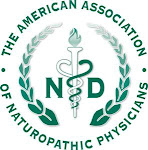Image by the NICHD via Wikipedia.org, used under the Fair Use Doctrine.
An interesting thing happened to me back in February – I received a request from the National Institutes of Health to serve on a panel that would determine how to dole out quite a few millions of dollars to fund research in what the NIH refers to as Human-Animal Interaction (HAI), usually referred to as animal-assisted therapy. Apparently the Eunice Kennedy Shriver National Institute of Child Health and Human Development, the National Institute of Nursing Research, and the WALTHAM Center for Pet Nutrition (the pet food division of the Mars company) had entered into a public-private partnership to pursue research on this topic.
My invitation, I am sure, was the result of having published two prior research studies (one part of an NCCAM Center grant) investigating the effect of hippotherapy (physical therapy on horseback) on children with spastic cerebral palsy. It seems that all of the other “experts” in this relatively tiny field had in fact applied for the current grants, leaving yours truly as a rather singularly available authority. The rest of the 35-plus members on the March review panel consisted of sociologists, psychologists, and behavioral scientists, with one or two other MDs thrown in for good measure.
The rather impressive vows of confidentiality we were asked to give preclude me from mentioning who was at the table, the nature of the submissions, or any aspect of the ensuing discussions, but that is not relevant to the gist of this blog report. What was most surprising was that exploration of this rather unique arena did not come from NCCAM, or in fact from any realm associated with the practice of alternative, or complementary, or holistic, or integrative, or naturopathic, or whatever-shall-we-call-it medicine. It came from pediatrics, nursing, and a pet food company. Surprising, as it awoke me to the fact that we do not have dominion over unconventional therapies, as our marketing brochures and indeed last February’s Institute of Medicine Summit on Integrative Medicine or last May’s North American Research Conference on Complementary and Integrative Medicine would have us believe.
This is a very, very good thing, especially for naturopathic medicine, because it confirms that no medical field, conventional or other, is able to usurp any clinical or research field as some have feared – the realm of healthcare is simply too slippery to remain within the grasp of any one profession. It’s sort of like the power of the Internet in China, or even here in the U.S. No government, or industry, or social experiment will ever control any culture or country or endeavor as long as people can find a way to share information with each other. Like in a blog.
By the way, if you may be wondering why the NIH has a new-found interest in the human-animal bond as a healing modality, keep in mind that there are over 750 equine therapy centers and over 2000 canine therapy programs up and running in our hospitals, cancer centers, nursing home, prisons, et al. – each with certified therapists and each with a waiting list stretching around the proverbial block. In other words, it exists, people are using it and paying for it out of pocket, and so we might as well research it and give it our medical stamp of approval.
Sound familiar?





No comments:
Post a Comment